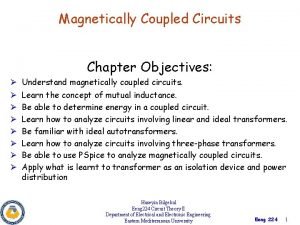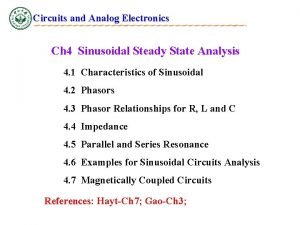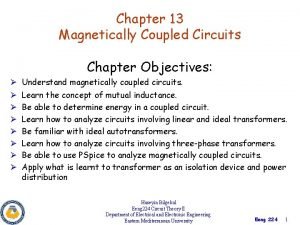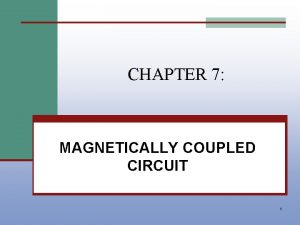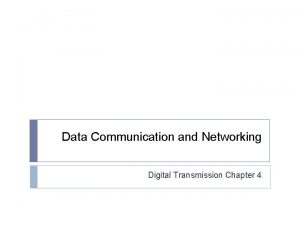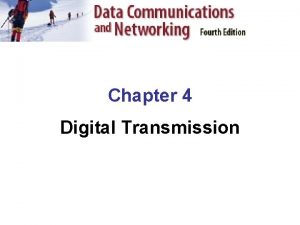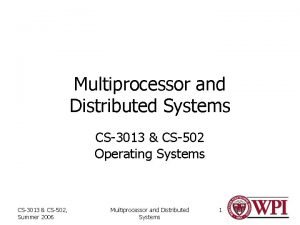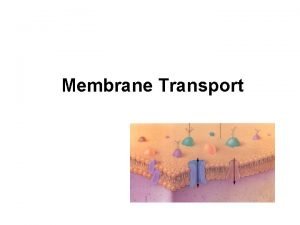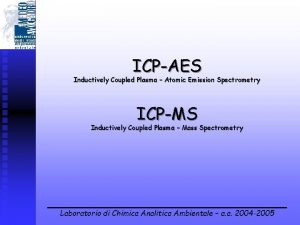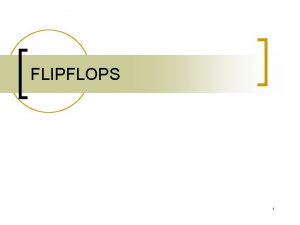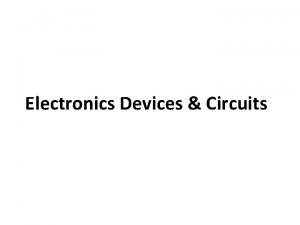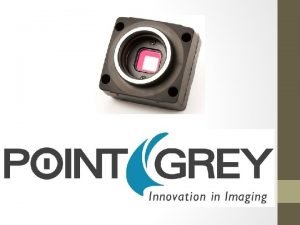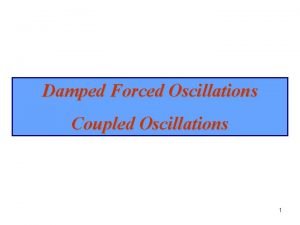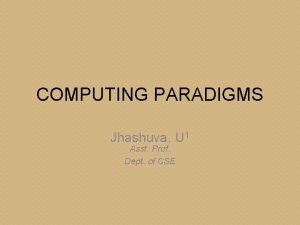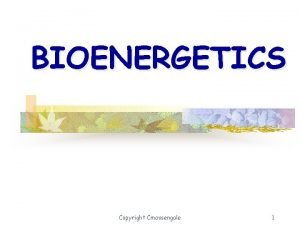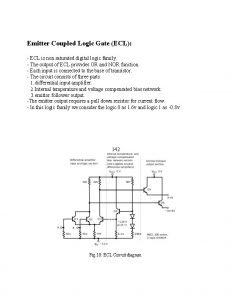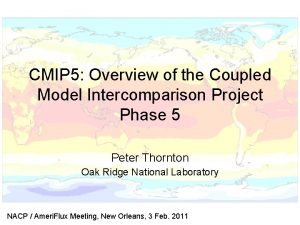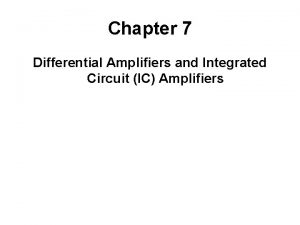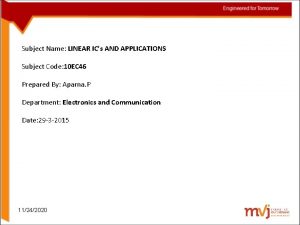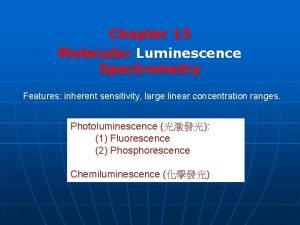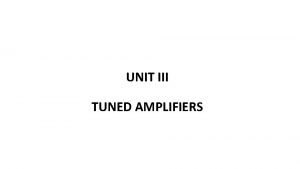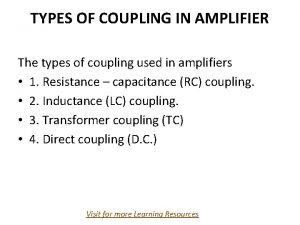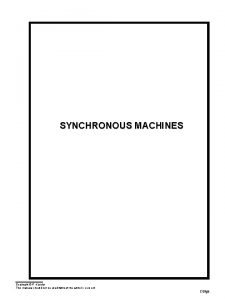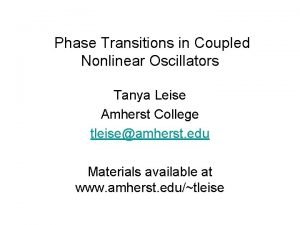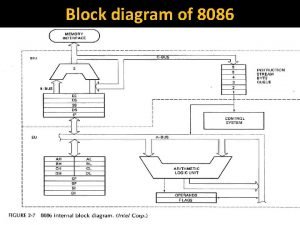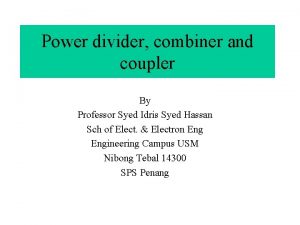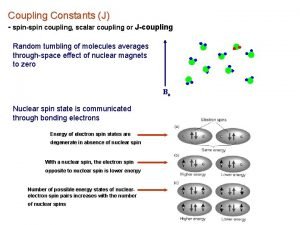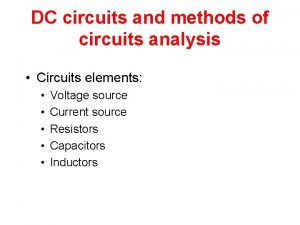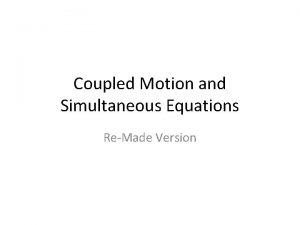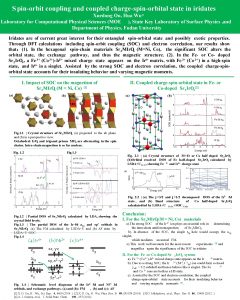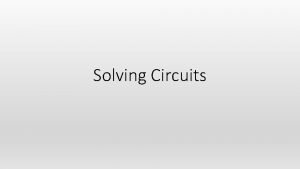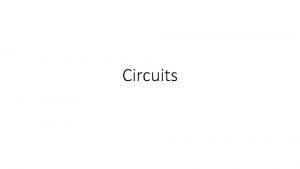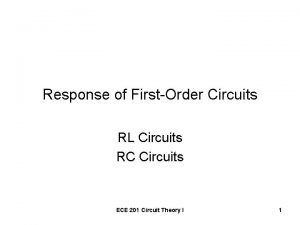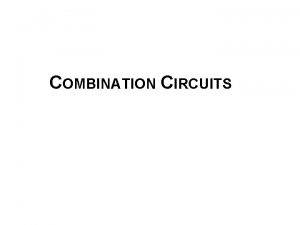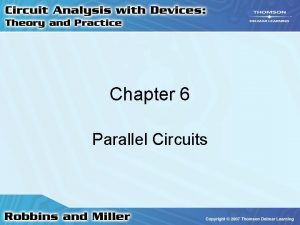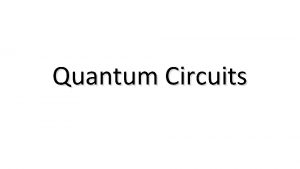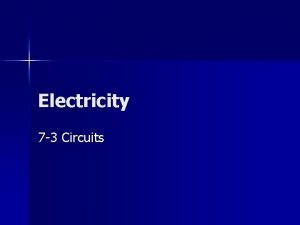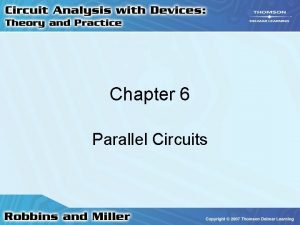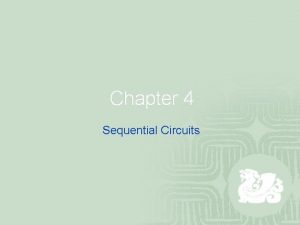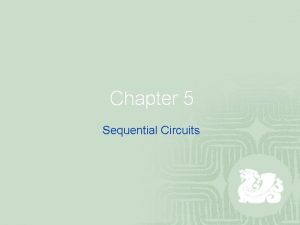Coupling Element and Coupled circuits n n n






























- Slides: 30

Coupling Element and Coupled circuits n n n Coupled inductor Ideal transformer Controlled sources

Coupling Element and Coupled circuits Coupled elements have more that one branch and branch voltages or branch currents depend on other branches. The characteristics and properties of coupling element will be considered. Coupled inductor Two coils in a close proximity is shown in Fig. 1 Coupled coil and reference directions

Coupled inductor Where and are nonlinear function of and By Faraday’s law Magnetic flux is produced by each coil by the functions

Coupled inductor Linear time-invariant coupled inductor If the flux is a linear function of currents and In sinusoid steady-state Note that the signs of and are positive but the sign for M can be

Coupled inductor Dots are often used in the circuit to indicate the sign of M Fig. 2 Positive value of M

Coupled inductor Coefficient of coupling The coupling coefficient is If the coils are distance away k is very small and close to zero and equal to 1 for a very tight coupling such for a transformer.

Coupled inductor Multi-winding Inductors and inductance Matrix For more windings the flux in each coil are self inductances and are mutual inductances In matrix form

Coupled inductor Fig 3 Three-winding inductor

Coupled inductor Induced voltage The induced voltage in term current vector and the inductance matrix is Example 1 Fig. 4 shows 3 coils wound on a common core. The reference direction of current and voltage are as shown in the figure. Since and has the same direction but are not therefore is positive while and are negative. Fig. 4

Coupled inductor It is useful to define a reciprocal inductance matrix which makes where Thus the currents are

Coupled inductor In sinusoid steady-state Series and parallel connections of coupled inductors Equivalent inductance of series and parallel connections of coupled inductors can be determined as shown in the example 2.

Coupled inductor Example 2 Fig. 5 shows two coupled inductors connected in series. Determine the Equivalent inductance between the input terminals. Fig. 5 H

Coupled inductor Example 3 Fig. 6 shows two coupled inductors connected in series. Determine the Equivalent inductance between the input terminals. Fig. 6 H Note for series inductors

Coupled inductor Example 4 Two coupled inductors are connected in parallel in Fig 6. Determine the Equivalent inductance. Fig 6

Coupled inductor The currents are KVL By integration of voltage Therefore H Note for parallel inductors

Ideal transformer is very useful for circuit calculation. Ideal transformer Is a coupled inductor with the properties q dissipate no energy q No leakage flux and the coupling coefficient is unity q Infinite self inductances Two-winding ideal transformer Fig. 7

Ideal transformer Figure 7 shows an ideal two-winding transformer. Coils are wound on ideal Magnetic core to produce flux. Voltages is Induced on each winding. If is the flux of a one-turn coil then Since and we have In terms of magnetomotive force (mmf) and magnetic reluctance

Ideal transformer If the permeability is infinite becomes zero then and From (1) and (2) The voltage does not depend on or but it depends only on

Ideal transformer (equal volt/ turn) For multiple windings Fig. 8

Ideal transformer Impedance transformation

Impedance transformation In sinusoid stead state Fig. 9

Controlled sources are used in electronic device modeling. There four kinds of controlled source. q Current controlled current source q Voltage controlled voltage source q Current controlled voltage source Fig. 10

Controlled sources Current controlled current source : Current ratio Voltage controlled current source : Transconductance Voltage controlled voltage source : Voltage ratio Current controlled voltage source : Transresistance

Controlled sources Example 1 Determine the output voltage from the circuit of Fig. 11 Mesh 2 Fig. 11

Controlled sources Example 2 Determine the node voltage from the circuit of Fig. 12 KCL

Controlled sources Diff. (3) from (1) then

Controlled sources The initial conditions From (3) From (5) and (6) and can be solved

Controlled sources Other properties The instantaneous power entering the two port is Since either If or is zero thus is connected at port 2 Therefore Power entering a two port is always negative

Controlled sources Example 3 Consider the circuit of Fig. 13 in sinusoid steady-state. Find the input impedance of the circuit. Fig. 13

Controlled sources Note if the input impedance can be negative and this two port Network becomes a negative impedance converter.
 Mutually coupled circuits
Mutually coupled circuits Sinusoidal steady state analysis of coupled circuits
Sinusoidal steady state analysis of coupled circuits Coupled circuits
Coupled circuits Magnetically coupled circuits lecture notes
Magnetically coupled circuits lecture notes Advantages of parallel circuits over series circuit
Advantages of parallel circuits over series circuit Difference between data element and signal element
Difference between data element and signal element Claim of value 5 sentences only
Claim of value 5 sentences only Signal element vs data element
Signal element vs data element Tightly coupled multiprocessor
Tightly coupled multiprocessor Refractory period
Refractory period Inductively coupled plasma
Inductively coupled plasma Sr latch with nor gates
Sr latch with nor gates Advantages of multistage amplifier
Advantages of multistage amplifier Charge coupled device
Charge coupled device Coupled pendulum
Coupled pendulum All resources are tightly coupled in computing paradigm of
All resources are tightly coupled in computing paradigm of Change in g
Change in g Coupled reaction
Coupled reaction The ecl circuits usually operates with
The ecl circuits usually operates with Coupled model intercomparison project phase 5
Coupled model intercomparison project phase 5 Emitter coupled differential amplifier
Emitter coupled differential amplifier Capacitor coupled inverting amplifier
Capacitor coupled inverting amplifier Charge coupled device detector
Charge coupled device detector Transistor
Transistor Types of coupling in amplifier
Types of coupling in amplifier Synchronous motor equations
Synchronous motor equations Coupled oscillations
Coupled oscillations Block diagram of loosely coupled configuration
Block diagram of loosely coupled configuration Highly aligned loosely coupled meaning
Highly aligned loosely coupled meaning All resources are tightly coupled in computing paradigm of
All resources are tightly coupled in computing paradigm of Coupled line coupler
Coupled line coupler
